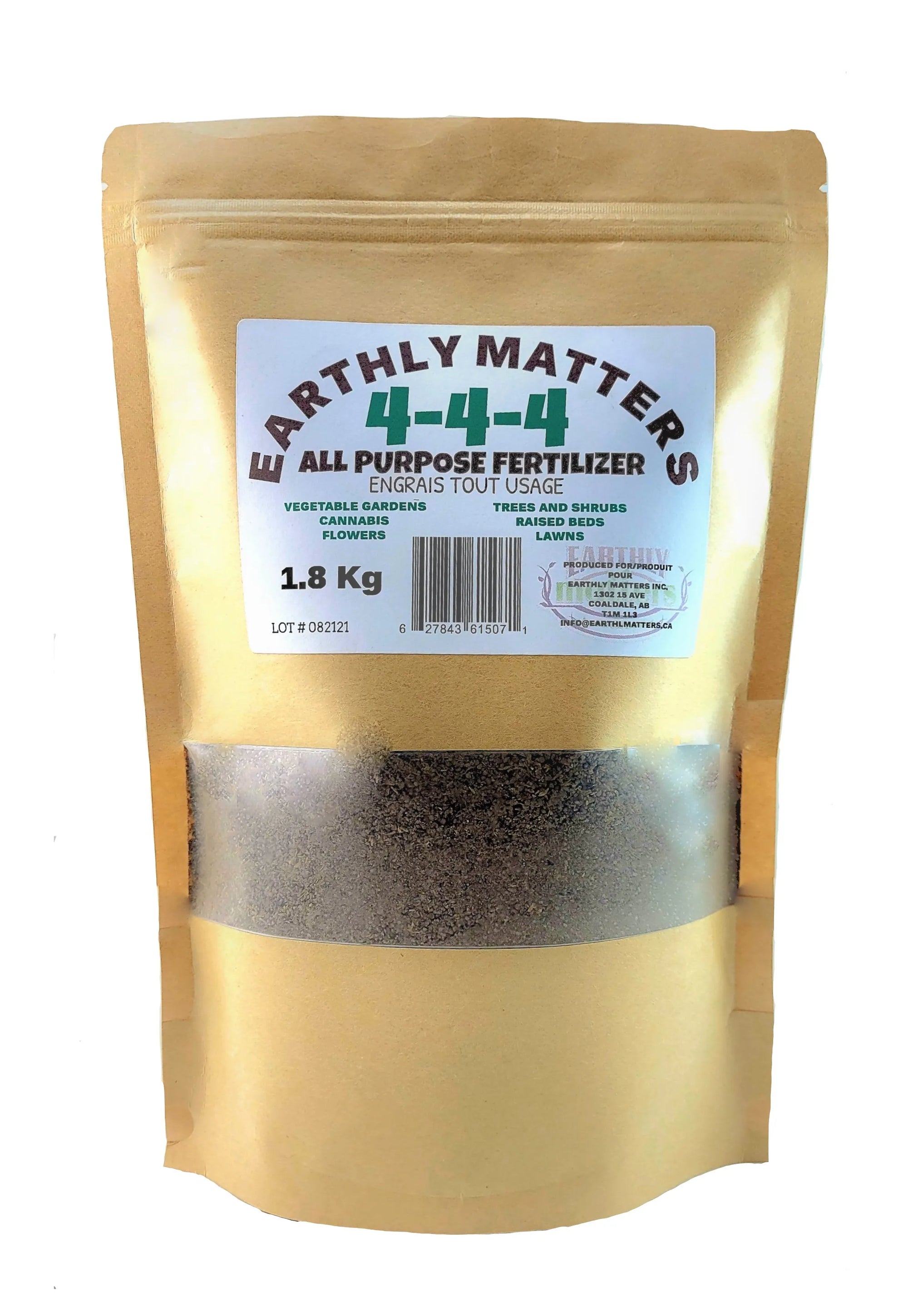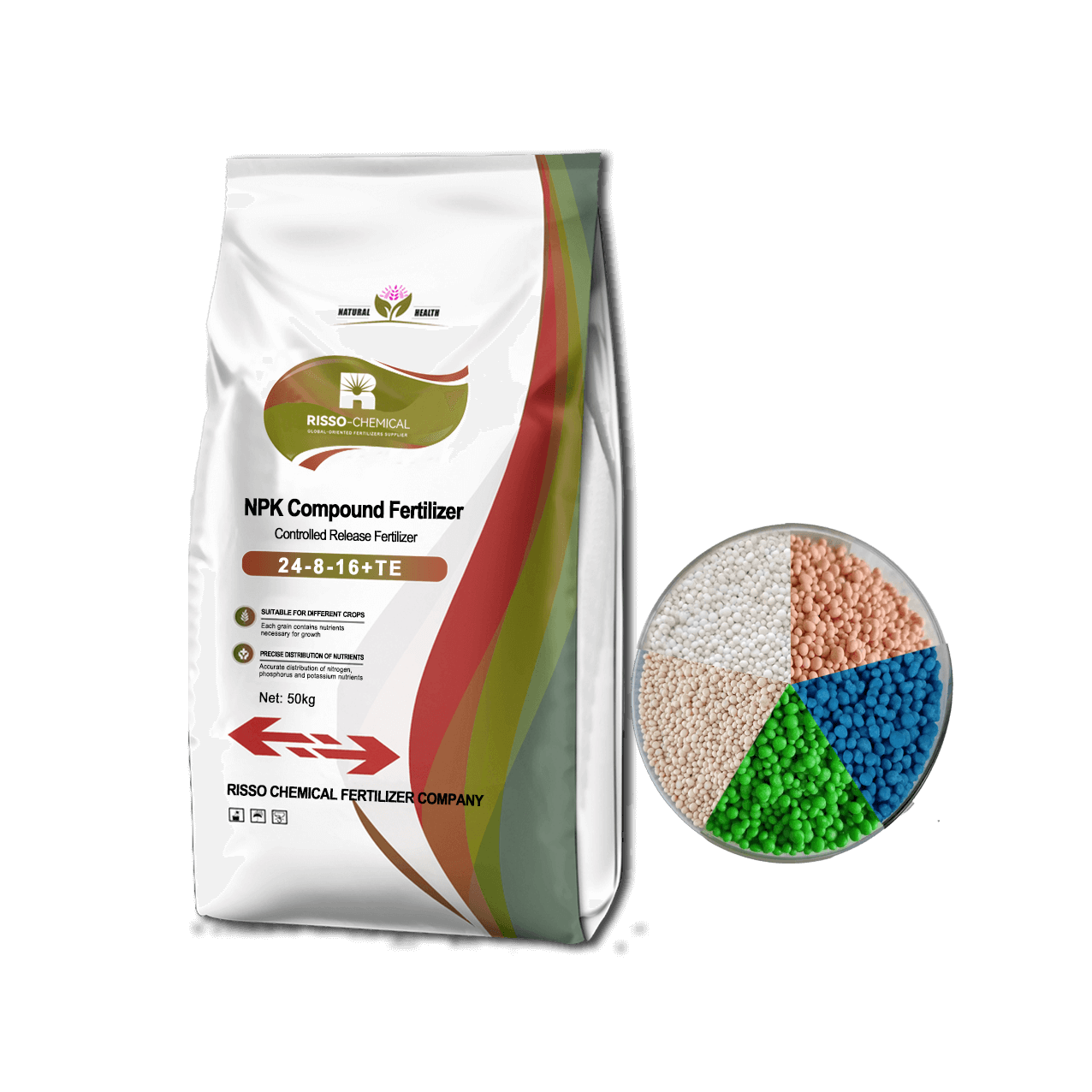Understanding What Do the Four Numbers on Fertilizer Mean in Australia? A Comprehensive Guide

Understanding the four numbers on fertilizer bags is essential for gardeners and farmers in Australia aiming to optimize their soil health and crop yields. These numbers represent the N-P-K ratio, indicating the percentages of nitrogen (N), phosphorus (P), and potassium (K), the three primary nutrients vital for plant growth. Each number provides insight into the nutrient composition and helps users select the right fertilizer for their specific needs. In this comprehensive guide, we will delve into the significance of these numbers, how to interpret them, and practical tips on choosing the right fertilizer for various gardening and agricultural applications.
Understanding the Four Numbers on Fertilizer in Australia
In Australia, the four numbers displayed on fertilizer bags represent the N-P-K ratio, which indicates the percentage of Nitrogen, Phosphorus, and Potassium contained within the product, crucial for understanding how to best nourish plants. The first number signifies the percentage of Nitrogen (N), essential for healthy foliage and growth, while the second number indicates the percentage of Phosphorus (P), important for root development and flowering. The final number refers to the percentage of Potassium (K), which aids in overall plant health and disease resistance. Knowing these values allows gardeners and farmers to select the appropriate fertilizer to meet their specific crop or garden needs.
What are the Components of N-P-K?
The N-P-K ratio consists of three primary nutrients that are vital for plant growth. Nitrogen supports leaf and stem development, promoting lush, green growth. Phosphorus contributes to the root systems and is essential in the flowering and fruiting stages of plants. Potassium enhances overall plant health, affecting water regulation and disease resistance. Together, these nutrients work synergistically to empower healthy plant growth.
How to Read the N-P-K Ratio?
The N-P-K ratio is prominently displayed on the fertilizer label in the format of three numbers, such as 10-20-10 or 5-10-5. The first number represents the percentage of Nitrogen, the second the percentage of Phosphorus, and the third the percentage of Potassium in the fertilizer. For example, a 20-10-10 fertilizer contains 20% Nitrogen, 10% Phosphorus, and 10% Potassium, indicating its nutrient composition and helping users determine its suitability for their gardening needs.
Types of Fertilizers and Their N-P-K Ratios
Different types of fertilizers have varying N-P-K ratios tailored for specific plant needs. For instance, a fertilizer designed for leafy greens may have a higher Nitrogen content, such as 30-0-0, while one meant for flowering plants often features elevated levels of Phosphorus, like 5-30-5. Understanding the purpose behind the N-P-K ratios helps in choosing the right fertilizer for optimum plant health.
Impact of Under and Over Fertilization
Both under-fertilization and over-fertilization can have detrimental effects on plants. Insufficient nutrients may lead to stunted growth, poor flowering, and low yields. Conversely, too much fertilizer, especially with high Nitrogen, can result in burnt roots or excessive foliage growth at the expense of flowers and fruits. Striking the right balance with appropriate N-P-K ratios is key to maintaining plant health.
Choosing the Right Fertilizer Based on Soil Type
The choice of fertilizer, guided by its N-P-K composition, can significantly impact plant growth depending on the soil type. For instance, sandy soils often require more frequent applications of Nitrogen-rich fertilizers because they leach nutrients quickly, while clay soils may retain nutrients better and require a balanced approach. Soil testing may provide insights into the existing nutrient levels, aiding in the selection of fertilizers with the suitable N-P-K ratio for optimal plant nutrition.
| Fertilizer Type | N-P-K Ratio | Best For |
|---|---|---|
| Leafy Greens | 30-0-0 | High Nitrogen demands |
| Flowering Plants | 5-30-5 | promoting blooms |
| Vegetable Production | 10-10-10 | Balanced growth |
| Fruit Trees | 12-6-12 | Optional fruiting |
| Sandy Soils | 20-20-20 | Frequent application |
What is 10-10-10 fertilizer in Australia?

10-10-10 fertilizer is a type of all-purpose fertilizer commonly used in Australia for a variety of plants, including vegetables, flowers, and shrubs. The numbers 10-10-10 represent the three key nutrients in the formula: nitrogen (N), phosphorus (P), and potassium (K), each constituting 10% of the total mixture. This balanced formulation supports healthy plant growth by promoting root development, flowering, and overall plant vigor.
The versatility of 10-10-10 fertilizer makes it an ideal choice for gardeners who want a straightforward solution that provides the basic nutrients required for blooming and fruiting plants. It can be applied at different stages of plant growth, ensuring that the nutritional needs of plants are met throughout their life cycle.
Benefits of 10-10-10 Fertilizer
10-10-10 fertilizer offers several advantages for gardeners and landscapers in Australia, making it a popular choice among both amateur and professional growers. Its balanced nutrient composition helps support a wide variety of plant types and growth stages.
See also:
- Boosts Overall Growth: The equal proportions of nitrogen, phosphorus, and potassium encourage robust growth in various plant species.
- Enhances Flowering: The balanced nutrient makeup supports the flowering process, making it ideal for ornamental and flowering plants.
- Suits Various Plants: Its all-purpose nature allows it to be used on vegetables, fruits, and flowers, reducing the need for multiple fertilizers.
Application Methods
Applying 10-10-10 fertilizer correctly is vital to ensure that plants receive the nutrients they need without overwhelming them. Several methods can be employed, depending on the gardener's preferences and the type of plants being cultivated.
- Granular Application: This method involves sprinkling the dry granules around the base of the plants and then working them lightly into the soil.
- Liquid Solution: Dissolving the fertilizer in water allows for easy application via a spray or watering can, promoting quick absorption.
- Soil Incorporation: When preparing garden beds, 10-10-10 can be mixed directly into the soil to ensure nutrient availability at planting time.
When to Use 10-10-10 Fertilizer
Understanding the ideal times to use 10-10-10 fertilizer is important for maximizing its benefits. Timing can greatly affect how well plants utilize the nutrients provided.
- Spring and Early Summer: This is typically the best time to apply 10-10-10, as plants are actively growing and require more nutrients.
- Before Planting: Incorporating the fertilizer into the soil before planting can promote strong growth from the very start.
- During Bloom Phase: Reapplying during the blooming period can provide extra nutrients that support flower and fruit development.
Considerations and Precautions
While 10-10-10 fertilizer can offer many benefits, there are several considerations and precautions to keep in mind to ensure its effective use and to protect the environment.
- Over-fertilization Risks: Applying too much fertilizer can lead to nutrient burn or toxic buildup in the soil.
- Soil Testing: Conducting a soil test beforehand can help determine if additional nutrients are necessary or if the soil already meets the plants' needs.
- Follow Instructions: Always adhere to the recommended application guidelines to avoid adverse effects on plant health.
Environmental Impact of 10-10-10 Fertilizer
The use of fertilizers, including 10-10-10, can have significant environmental implications. When mismanaged, these fertilizers can contribute to nutrient runoff, which can harm local ecosystems.
- Water Quality Concerns: Runoff containing excess nutrients can lead to water pollution and algal blooms in nearby water bodies.
- Soil Health: Over-reliance on synthetic fertilizers can degrade soil health over time, reducing its natural fertility.
- Use of Organic Alternatives: Exploring organic fertilizers can mitigate some of the environmental impacts associated with chemical fertilizers.
What does 444 mean in fertilizer?

In fertilizer terminology, 444 refers to a specific ratio of the three primary nutrients that plants need for growth: nitrogen (N), phosphorus (P), and potassium (K). The numbers indicate the percentage by weight of each nutrient in the fertilizer mix. Therefore, a 444 fertilizer contains 4% nitrogen, 4% phosphorus, and 4% potassium. This balanced ratio is often described as a complete fertilizer, intended to promote overall growth, enhance root development, and improve flowering and fruiting of plants.
Understanding N-P-K Ratios
The N-P-K ratio is a crucial component of fertilizers, indicating the proportion of the three main nutrients. This ratio helps gardeners and farmers choose the right fertilizer for their plants.
- Nitrogen: Essential for leaf and stem growth, nitrogen promotes green, leafy plants.
- Phosphorus: Important for root development and flowering, phosphorus helps in energy transfer and photosynthesis.
- Potassium: Aids overall plant health, potassium enhances disease resistance and improves water management.
Benefits of Using 444 Fertilizer
Using a fertilizer with a balanced ratio like 444 offers several advantages for plant health. It addresses various aspects of plant development and contributes to efficient nutrient absorption.
- Promotes Balanced Growth: With each nutrient present in equal amounts, plants receive a well-rounded supply for all their growth stages.
- Versatile Application: The 444 formulation works well for a variety of plants, making it suitable for gardens, lawns, and container plants.
- Simple Nutrient Management: Gardeners can simplify their fertilization routine by using one product rather than multiple specialized fertilizers.
When to Use 444 Fertilizer
Determining the right time to apply 444 fertilizer can impact its effectiveness significantly. This product is typically used during specific stages of plant growth.
- Pre-planting: Apply before planting to prepare the soil by enriching it with essential nutrients.
- During Growth Stages: Fertilize at intervals during plant growth, especially during flowering and fruiting stages.
- Seasonal Application: In climates with distinct growing seasons, applying in early spring can kickstart the growth process.
Types of Plants that Benefit from 444 Fertilizer
Different types of plants have varying nutrient requirements, but many can thrive with a balanced fertilizer like 444.
- Vegetables: Leafy greens, tomatoes, and other vegetables benefit from the balanced nutrient supply.
- Fruits: Fruit-bearing plants often require adequate phosphorus for blooming and fruit set.
- Flowering Plants: Gardening flowers appreciate the balanced nutrients for vibrant blooms.
Considerations When Using 444 Fertilizer
Though 444 fertilizer is beneficial, several considerations should be kept in mind to maximize its impact.
See also:
- Soil Test: Conduct a soil test to understand the existing nutrient levels and adjust applications accordingly.
- Watering: Ensure the soil is adequately moist before and after application to enhance nutrient uptake.
- Local Conditions: Consider factors like climate, soil type, and specific plant needs which may influence fertilizer effectiveness.
What is 24 nitrogen 8 phosphorus and 16 potassium?

The combination of 24 nitrogen, 8 phosphorus, and 16 potassium refers to a specific nutrient ratio commonly found in fertilizers. This ratio indicates the percentages of each nutrient that are essential for plant growth. In horticulture and agriculture, these nutrients are often represented in the N-P-K (Nitrogen-Phosphorus-Potassium) format.
Nitrogen's Role in Plant Growth
Nitrogen is an essential nutrient for plants, primarily contributing to their vegetative growth. It plays a crucial role in the following areas:
- Protein Synthesis: Nitrogen is a fundamental component of amino acids, which form proteins necessary for plant structure and function.
- Photosynthesis: Aids in the formation of chlorophyll, which is critical for capturing sunlight energy and converting it into food.
- Growth and Development: Promotes lush, green foliage and contributes to overall vigor.
Phosphorus for Energy Transfer
Phosphorus is vital for energy transfer in plants. It is involved in key processes that fuel growth and development:
- ATP Production: Phosphorus is a component of adenosine triphosphate (ATP), which plants use for energy.
- Root Development: Promotes healthy root growth, enhancing nutrient and water uptake.
- Flower and Fruit Formation: Aids in reproductive processes, leading to better flowering and fruiting.
Potassium's Importance for Plant Health
Potassium is another macronutrient integral to various plant functions, influencing the overall health of the plant:
- Water Regulation: Helps in the control of stomata, impacting water loss and transpiration rates.
- Enzyme Activation: Facilitates essential biochemical reactions by activating various enzymes within the plant.
- Stress Resistance: Improves plant tolerance to environmental stresses such as drought and salinity.
Application of NPK Ratios in Fertilizers
The NPK ratio of 24-8-16 signifies the proportion of nitrogen, phosphorus, and potassium in a fertilizer mix. This specific ratio can be categorized as:
- High Nitrogen Content: Ideal for applications that require robust leaf and stem growth.
- Moderate Phosphorus Level: Supports the initial growth phase and assists in establishing roots.
- Balanced Potassium Supply: Ensures that the plant can thrive under varying conditions, promoting overall health.
Benefits of Using NPK 24-8-16 Fertilizer
When using a fertilizer with an NPK ratio of 24-8-16, growers can expect specific benefits that cater to their plants' needs:
- Enhanced Growth Rates: Improved nitrogen levels lead to faster vegetative growth.
- Greater Yield Potential: Balanced nutrients contribute to an increase in both the quantity and quality of produce.
- Longer Lasting Health: Continuous nutrient supply supports sustained health throughout the growing season.
Questions from Our Readers
What do the four numbers on fertilizer represent?
The four numbers on fertilizer represent the N-P-K ratio, which stands for Nitrogen (N), Phosphorus (P), and Potassium (K). Each number indicates the percentage of each nutrient in the fertilizer, with the first number being nitrogen, the second phosphorus, and the third potassium. The fourth number, if present, may indicate the amount of secondary nutrients or sometimes micronutrients.
How are these numbers helpful for gardening?
These numbers are helpful for gardening because they allow gardeners to choose a fertilizer that meets the specific nutritional needs of their plants. By understanding the N-P-K ratio, gardeners can provide balanced nutrition for plant growth, flowering, and fruiting, ensuring their garden receives the right nutrients at the right time.
Can the percentages in the four numbers change?
Yes, the percentages in the four numbers can change depending on the fertilizer product. Different fertilizers are formulated to meet various plant requirements and growth stages, which is why some may have a higher nitrogen content for leafy growth, while others may be higher in phosphorus for promoting blooms.
What does a higher first number signify?
A higher first number indicates a higher concentration of nitrogen, which is essential for leaf and stem growth. Fertilizers with a higher nitrogen content are often used for vegetative growth, making them ideal for leafy crops like lettuce or grass, while lower nitrogen levels may be preferred for flowering or fruiting plants.
See also:

If you want to read more articles like Understanding What Do the Four Numbers on Fertilizer Mean in Australia? A Comprehensive Guide, we recommend you check out our Fertilisers category.
Leave a Reply
Related Articles